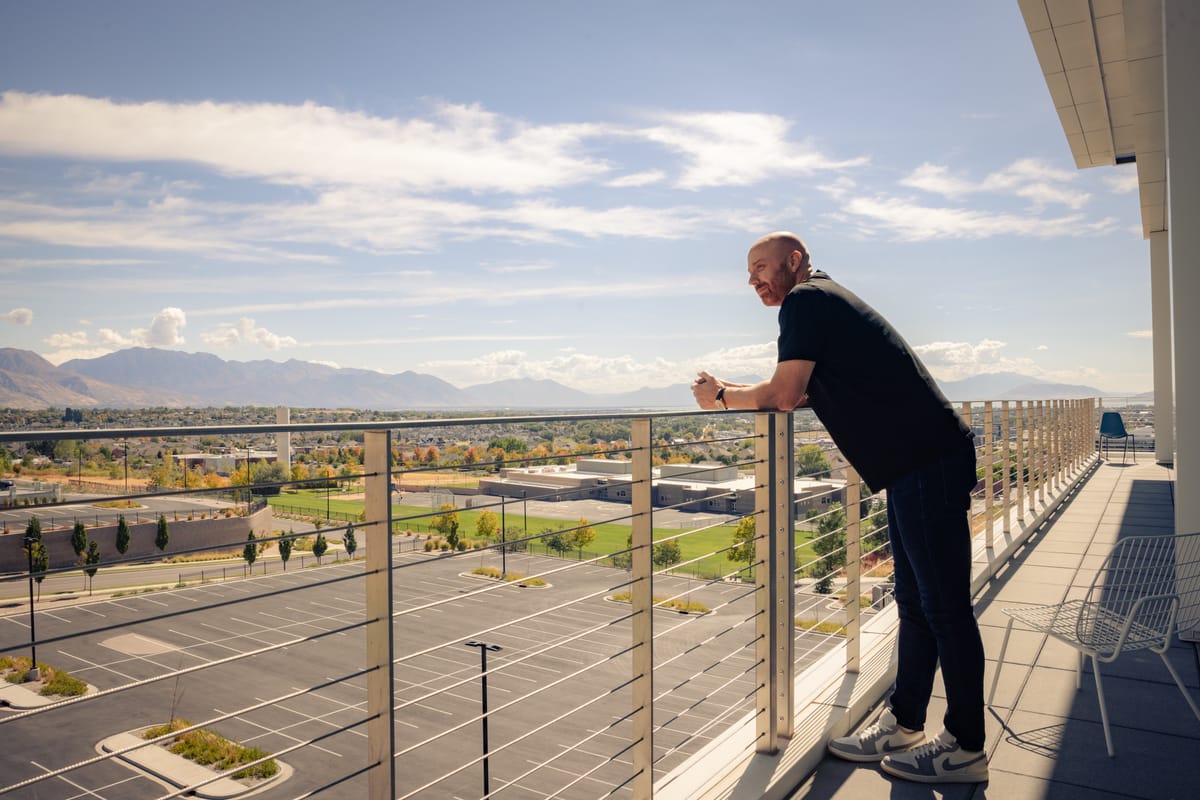

Lehi, Utah — September 29, 2025
When Matt Behrend and his team at Agility spotted an ad inside ChatGPT earlier this year, they knew they were witnessing more than a curiosity. For them, it was a signal of where digital advertising is headed. “We saw an ad on ChatGPT. They’ve since stopped that, and they’re not admitting openly that they tested it. But we got a screenshot, which was pretty cool,” Behrend said. “What it’s doing is forcing companies to adopt brand advertising.”
Behrend, CEO of Agility, sat down recently with TechBuzz to discuss his company that he calls "the first brand advertising operating system.” Based in Lehi, Utah, Agility has built technology to help companies solve what Behrend describes as a chronic blind spot: connecting brand advertising to measurable outcomes. He believes generative AI will accelerate the need for those tools. “Companies are losing control of how they show up in search results,” he said. “As search volume shifts to generative AI platforms, old playbooks don’t work anymore.”
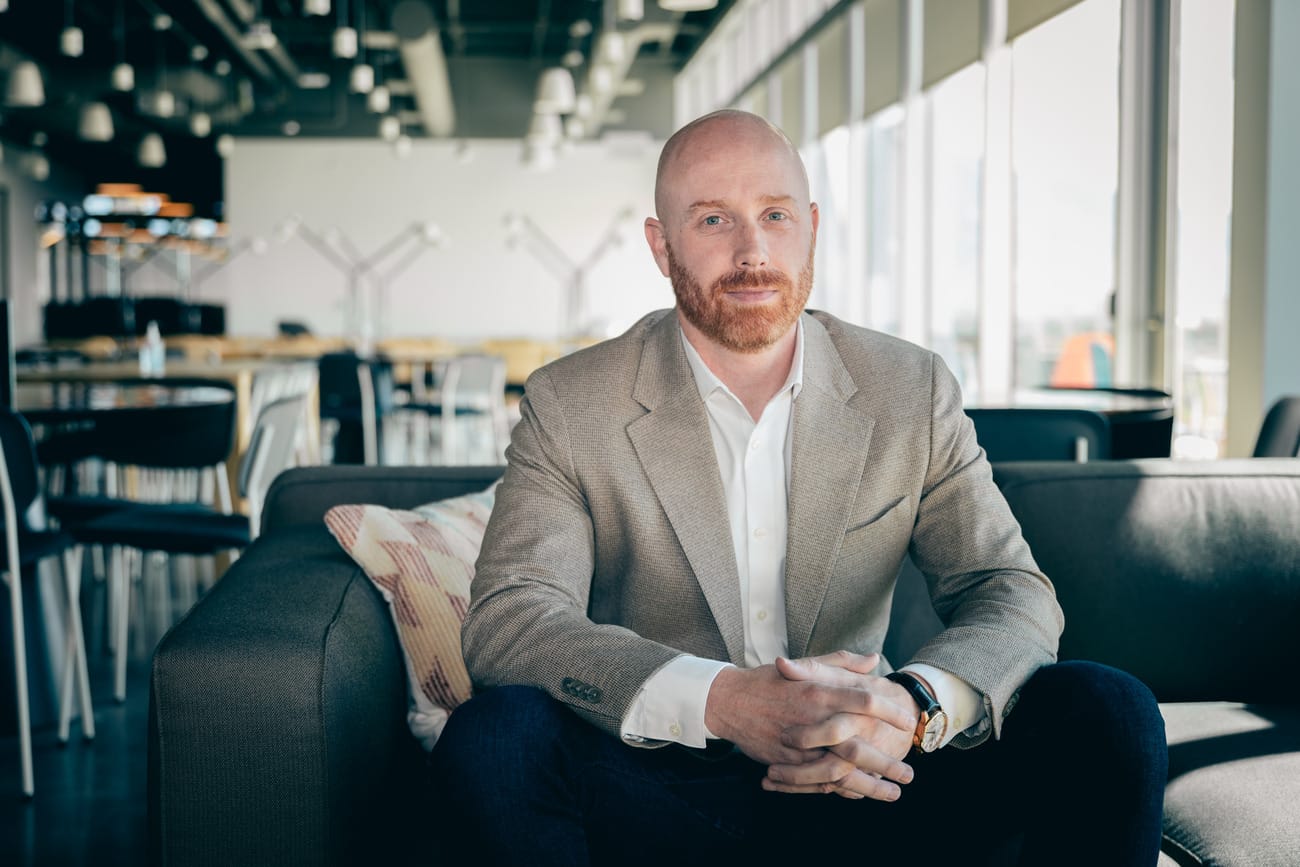
A Serial Entrepreneur Tackling a Persistent Pain Point
Behrend describes himself as “an eternal entrepreneur.” Over the last 15 years, he has launched multiple tech companies, with three acquisitions under his belt. Across those ventures, he always took on the role of chief revenue officer. “The deepest pain point for me in every single company was, how do I make sure, without fail, that we have consistent lead gen?” he recalled. “Performance marketing made it efficient to capture demand—through search and social. But what about the people I wasn’t reaching? The ones who were pain-aware but not category-aware, not product-aware, definitely not brand-aware?”
After his last exit, he set out to solve that problem. Four and a half years ago, he acquired Agility, then a small agency specializing in geofencing. He used it as a launching point for building technology dedicated to brand advertising. “We interviewed a lot of customers, and what we discovered was that none of the data was connected, the measurement was fuzzy at best,” he said. “No companies we talked to felt confident in their brand advertising strategies.”
Finding Growth Beyond Google and Meta
Instead of competing in search and social, Agility focused on the “open internet”—everything outside of Google, Meta, and TikTok. Behrend said the insight was obvious once they looked at customer behavior. “We typically see that media consumption is between 15 and 45% inside Google, Meta, TikTok. Outside of it, it makes up the rest,” he said. “That’s Spotify, Netflix, Disney+, podcasts, websites, mobile apps. Not only is that ad inventory cheaper, but those ad channels can be merged.”
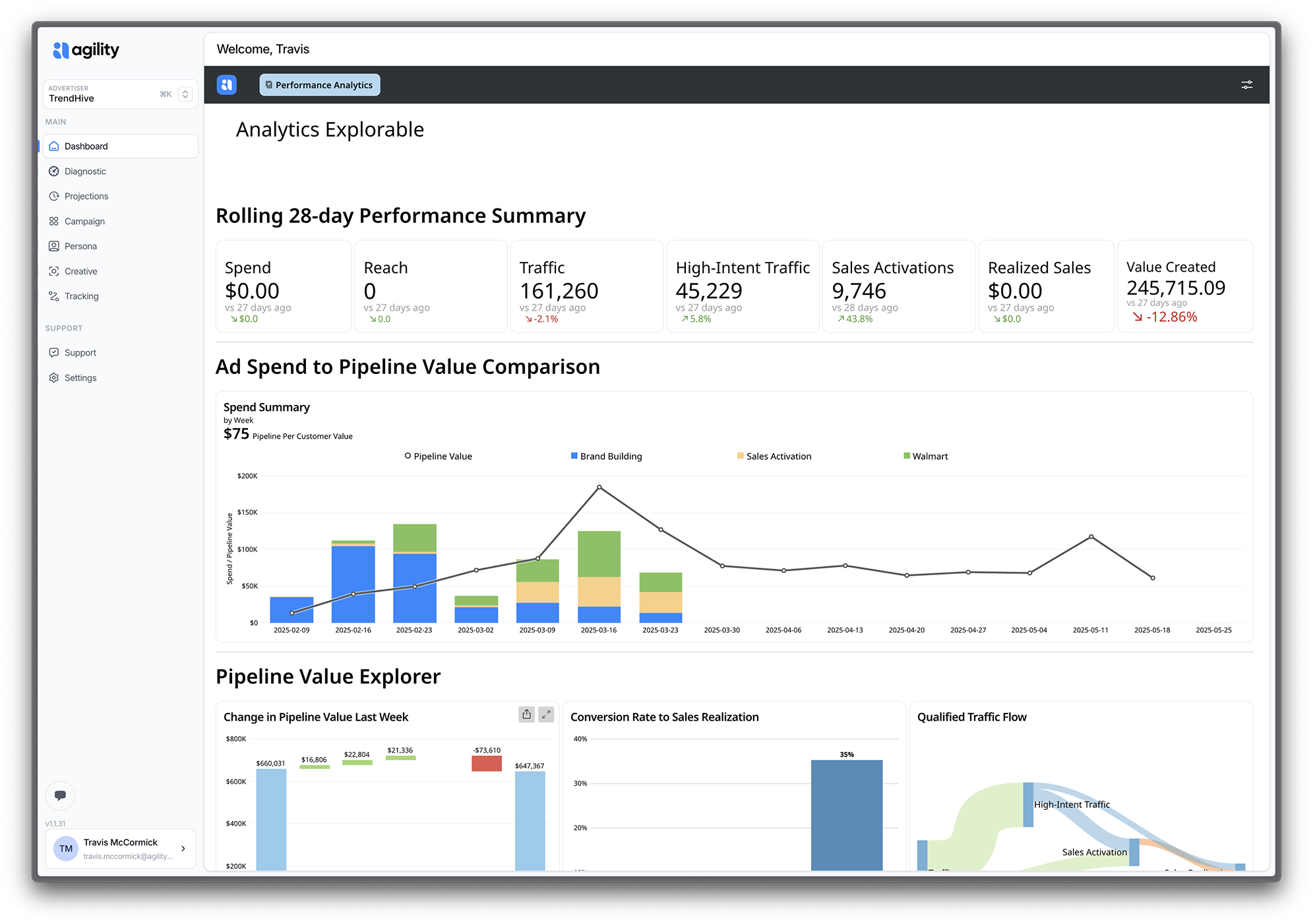
Agility built a platform that targets audiences across these channels, using what Behrend calls “the best in the world” brand advertising targeting. “We merged all the data—purchase data, social data, financial data, demographic, geographic, behavioral, contextual,” he explained. “All of that can now be layered in our audience targeting.”
Measuring the Impact of Brand
If targeting was Agility’s first innovation, measurement was the second. “No other company has a real-time dashboard for randomized control trials measuring brand advertising,” claimed Behrend. Agility launched the tool just four months ago. “It’s been exciting—the companies adopting it are running ads with Post Malone, Shaquille O’Neal, the Dallas Cowboys. We’re seeing some heavy hitters use our platform.”
The platform lets companies compare treatment and control groups to show incremental revenue lift across KPIs. That’s a breakthrough in a space where brand advertising has long been difficult to justify. “Every marketer knows that brand advertising is the key to keeping a full and flowing pipeline,” stated Behrend. “But it’s hard for CMOs to prove to CFOs that they have to use it.”
Agility is already working on a new tool to address that very issue: bridging the communication gap between CMOs and CFOs over brand ad budgets. “Super painful, incredibly difficult,” Behrend said of those budget conversations. The feature, expected to launch in two months, aims to give CFOs confidence that brand spend delivers measurable returns.
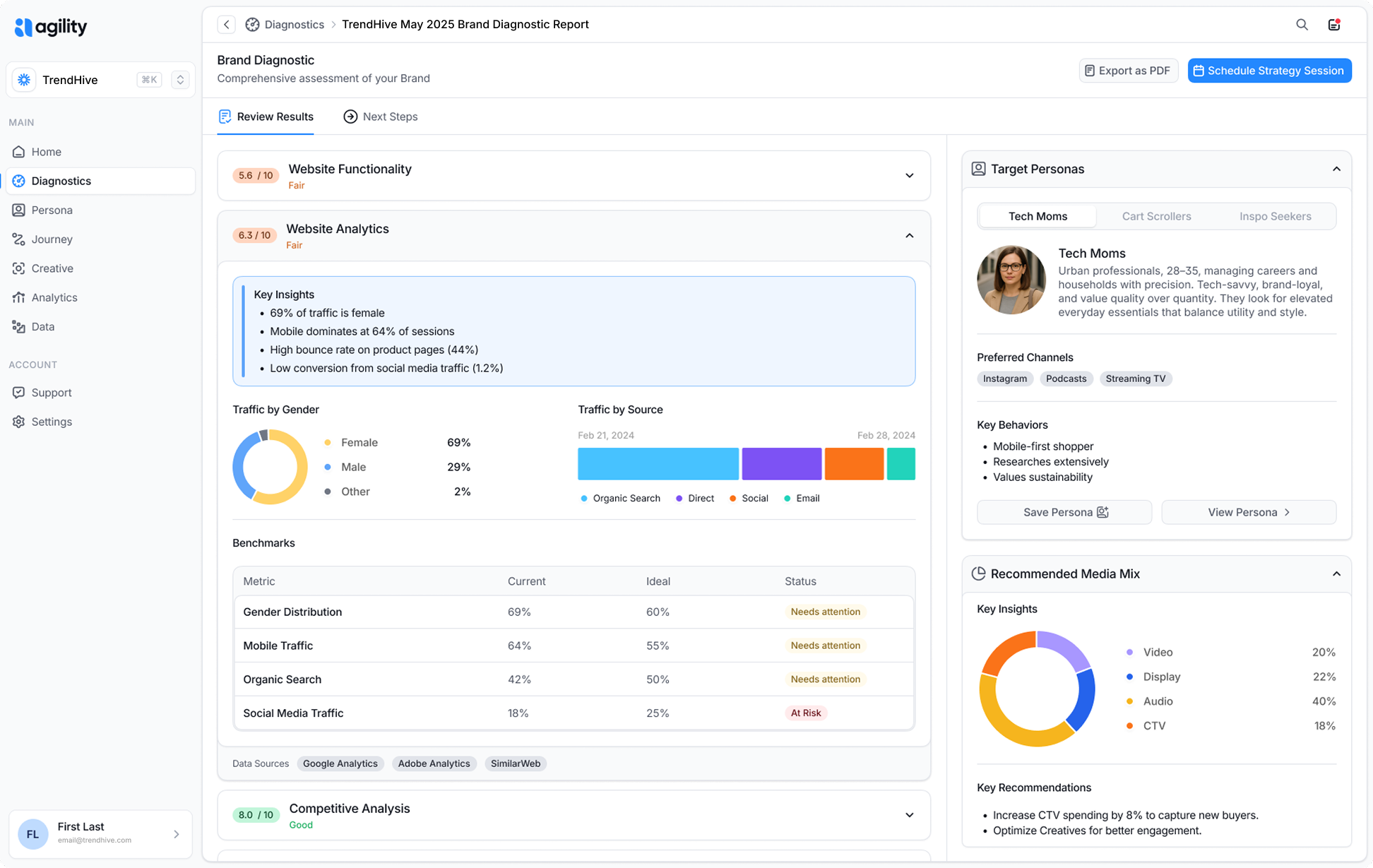
From Freemium to Fortune 1000
Agility sells its platform through a freemium model. “If you’re a smaller company, you can just log in and use it for free,” Behrend explained. Larger customers—typically companies with $100 million to $3 billion in revenue—engage through managed services. “That’s when we provide creative production, campaign management, and everything needed for a complete brand advertising solution.” Fees run about 10% of ad spend, with most enterprise clients testing with budgets starting at $100,000 per month.
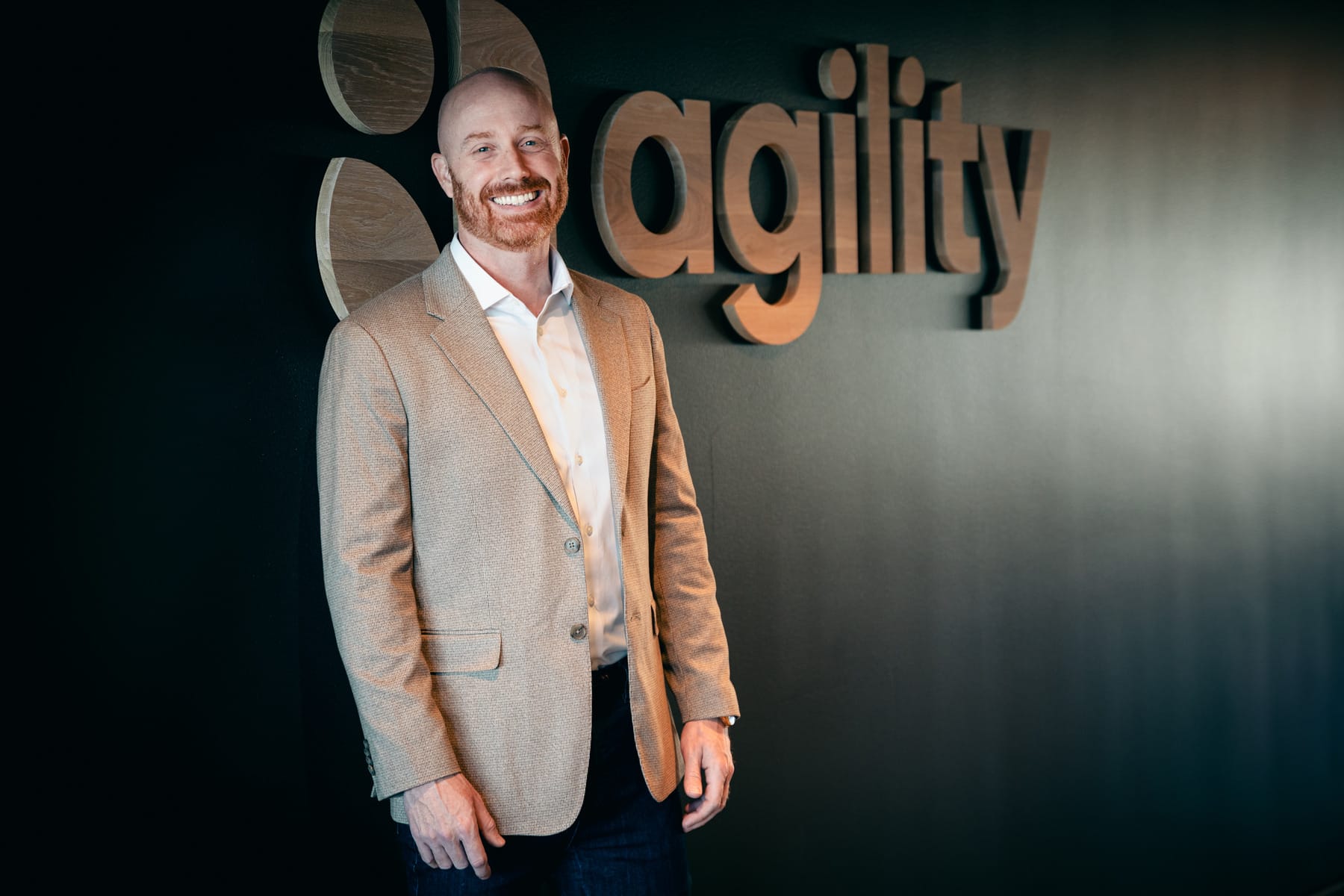
Word-of-mouth, events, and Agility’s own platform drive adoption. “We use our own product a ton,” Behrend said. “We’re generating leads, and companies are buying without us ever meeting them in person. But events are still the most effective touchpoint, because trust matters. We don’t have a long track record yet, so case studies and in-person connections go a long way.”
A Local Company with Global Ambitions
Headquartered at Innovation Pointe in Lehi, Agility employs around 80 people, with about 50 in-office and the rest remote. Its building overlooks Utah Lake and the Wasatch range, a fitting perch for a company looking to broaden the horizons of digital advertising. “We see ourselves as the first brand advertising operating system,” Behrend said. “There are plenty of ad tech solutions, but not platforms built from the ground up for brand advertising.”
Whether the ChatGPT ad is a harbinger or a blip, Agility is positioning itself at the forefront of a new advertising era. “Performance marketing is breaking down. As search volume shifts, companies can’t rely on paid search alone,” said Behrend. “Brand advertising is the future—and we intend to lead it.”
To learn more, visit Agilityads.com. View an overview video below:

